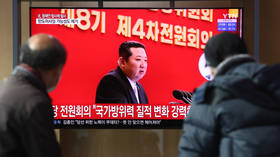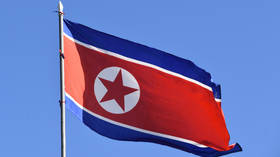North Korea discloses purpose of new spy satellite

North Korea has claimed that its new satellite system would be able to alert Pyongyang of military maneuvers by Washington, Seoul and Tokyo in the region in “real time.”
In a statement carried by the country’s state-run KCNA agency on Thursday, North Korean leader Kim Jong-un revealed the ultimate purpose behind the brand-new satellite, which Pyongyang had claimed to have tested twice within the last month.
The satellite, once put into orbit, would provide the North Korean military “real-time information on military actions against it by the aggression troops of the U.S. imperialism and its vassal forces in South Korea, Japan and the Pacific,” Kim said, as reported by KCNA.
Extolling the virtues of the new spy tool, Kim alleged that the satellite is fitted with “high-resolution photographing equipment,” promising to launch “a lot” of such devices into orbit in the next five years.
The North Korean leader insisted that Pyongyang will keep tabs on US troop movements to protect the reclusive state from a potential military assault from Washington and its allies in the region. Kim argued that the satellite project, once completed, would enable his country to “distinguish the character of hostile military actions against the DPRK” and “improve the rapid counteraction capability of the armed forces.”
North Korea had previously claimed it successfully carried out two back-to-back launches of its “reconnaissance satellite” on February 27 and March 5, with the latest bringing the number of Pyongyang’s missile tests to nine since the start of the year.
Washington, Seoul and Tokyo have denounced North Korea’s ramped-up missile activity, claiming the recent tests involved ballistic missiles and may serve as a preparation for an intercontinental ballistic missile (ICBM) or a nuclear test by Pyongyang.
On Wednesday, the US military announced that it would boost its own surveillance and reconnaissance operations in the Yellow Sea, located between China and the Korean peninsula, as well as place its ballistic missile defense forces in the area on a higher state of readiness.













